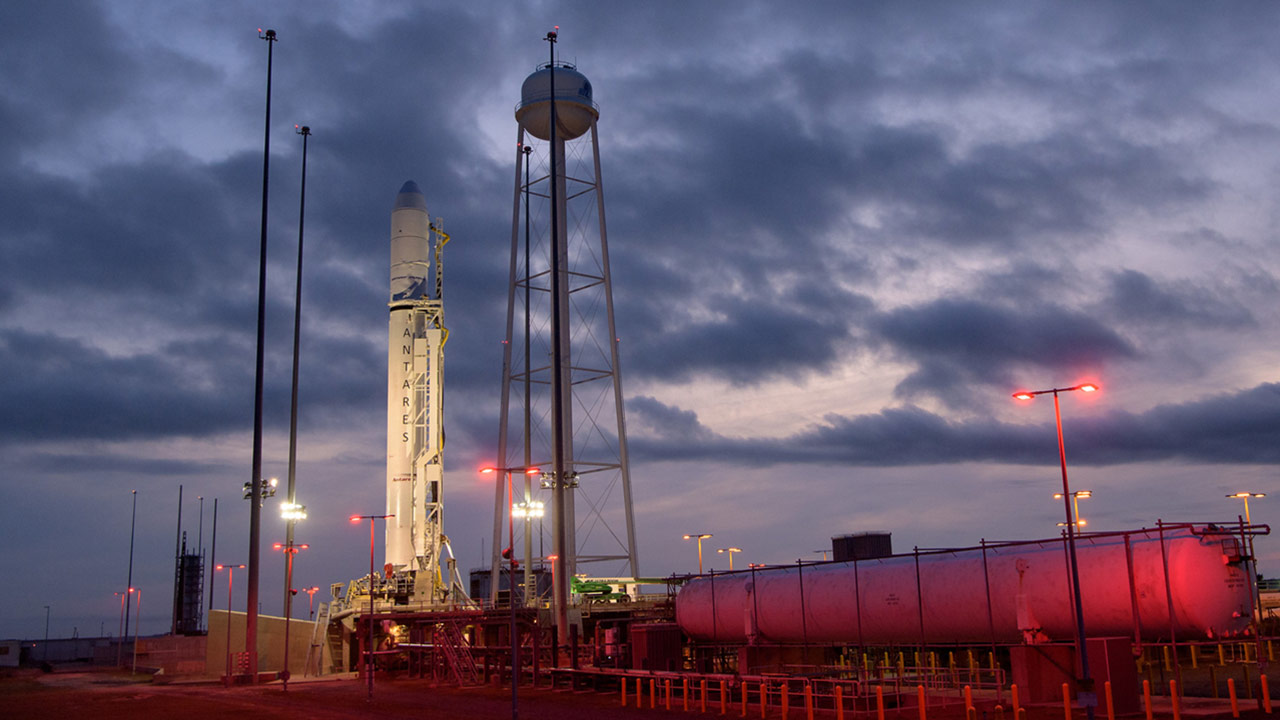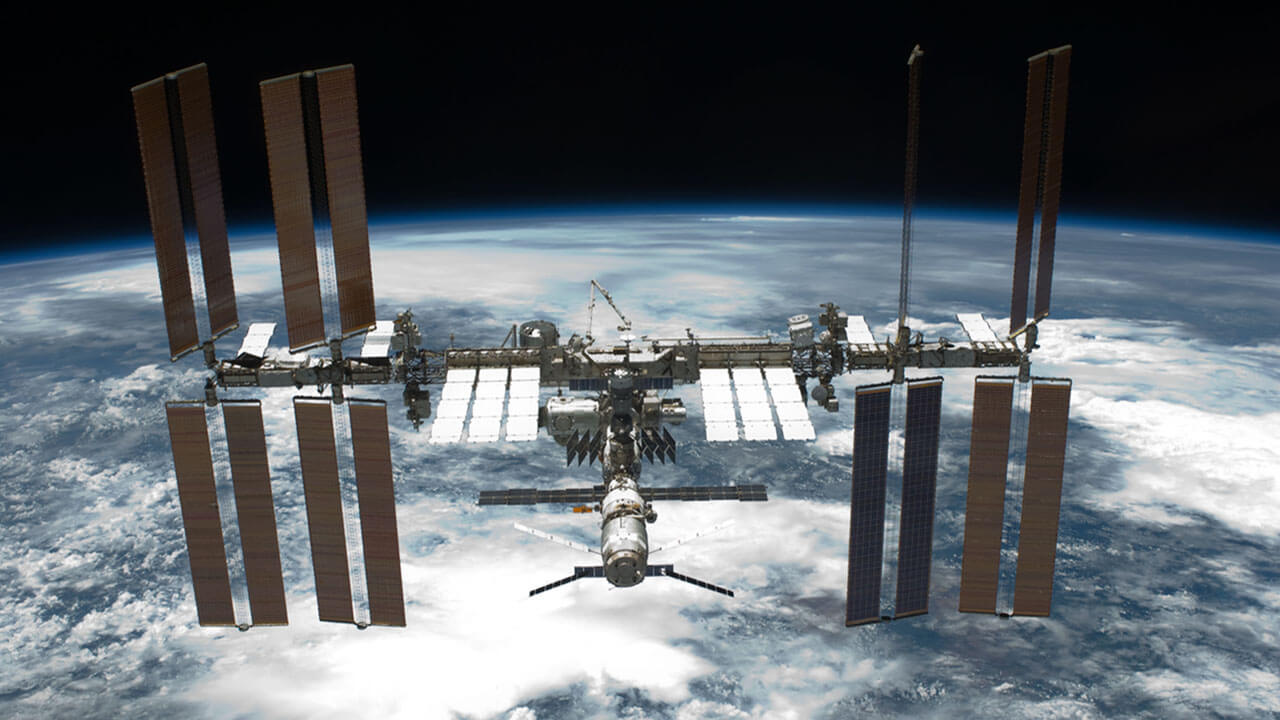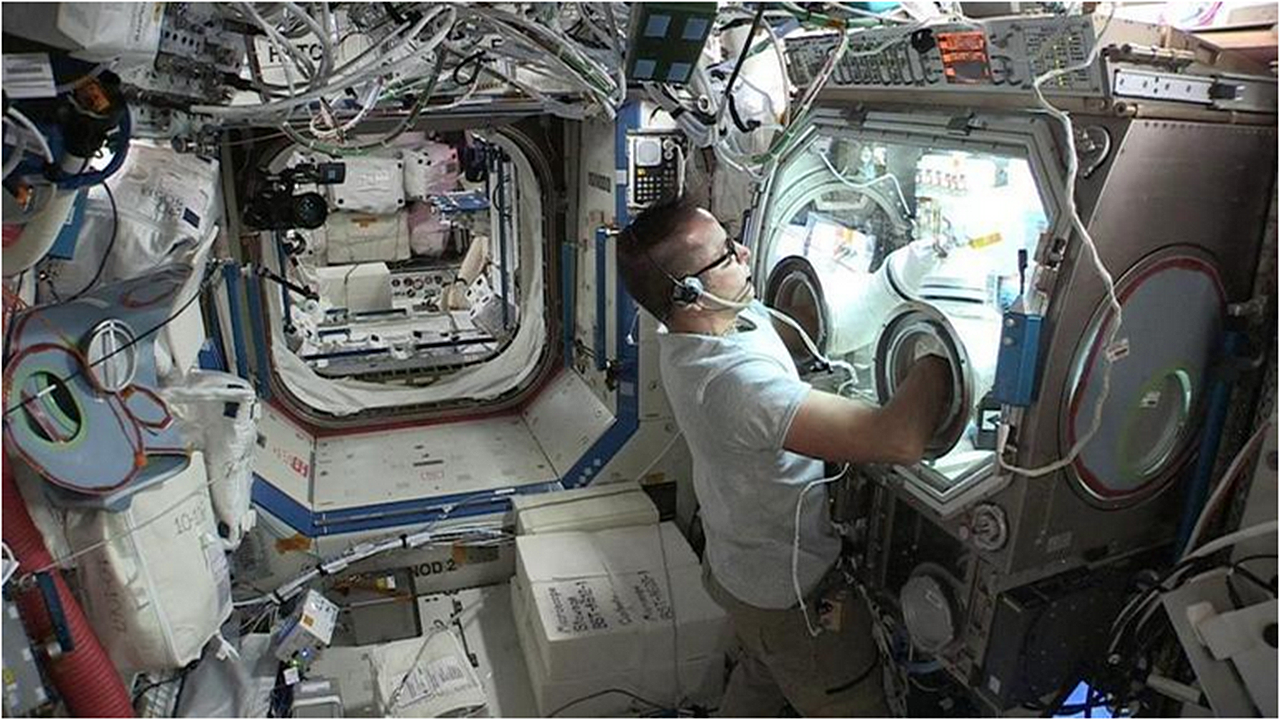KENNEDY SPACE CENTER (FL), October 24, 2019 – More than 20 separate payloads sponsored by the International Space Station (ISS) U.S. National Laboratory will launch to the orbiting laboratory on Northrop Grumman’s 12th commercial resupply services mission. This will mark the largest number of ISS National Lab-sponsored payloads on a Northrop Grumman resupply mission to date. The payloads launching on the Cygnus vehicle include investigations from a wide variety of private-sector companies seeking to leverage the unique environment of the ISS National Lab to enhance products and therapies on Earth. The launch is slated for no earlier than November 2 at 9:59 a.m. EST from Wallops Flight Facility in Virginia.
With the payloads launching on this mission, more than 70 separate payloads will have made their way to the ISS National Lab this year—70% of which represent private-sector users. Additionally, 2019 has been a prolific year for research conducted on station, with ISS National Lab-sponsored investigations exceeding the ISS National Lab’s 50% allocation of crew time dedicated to conducting experiments onboard the space station.
Building on this record-setting year for research on the orbiting laboratory, below highlights some of the payloads launching on this mission:
AstroRad Vest
This project from Lockheed Martin Corporation (in collaboration with StemRad) will test the performance of the AstroRad radiation shielding vest on crew members onboard the ISS. The AstroRad vest selectively protects organs most sensitive to radiation exposure—with a focus on protecting stem cell concentrations within those organs. Knowledge gained from this investigation could aid in the development of shielding technologies for patients on Earth receiving radiation treatments and personnel who work in areas where radiation exposure is a risk.
Investigation of Deep Audio Analytics on the International Space Station
This project from Astrobotic aims to validate a novel technology from Bosch USA Research called Deep Audio Analytics (DAA) that transforms audio patterns into actionable information. DAA can be used to monitor machines, environments, and critical infrastructure by “making sense” of the distinctive audio patterns emitted. Market data indicates that this technology has high market potential in several business verticals, including machine monitoring, infrastructure, healthcare, security solutions, smart homes, and smart factories.
Study of Lamborghini’s Carbon Fiber Composites for Aerospace Applications
This investigation seeks to leverage the extreme environment of space to test the performance of proprietary carbon fiber materials developed by Automobili Lamborghini. The research team will assess the ability of the materials, which include forged and 3D-printed carbon fiber composites, to withstand exposure to temperature fluctuations, radiation, and atomic oxygen. This project is being done in collaboration with the Houston Methodist Research Institute, which seeks to leverage knowledge gained from this advanced materials study to enhance technologies for implantable drug delivery devices for patients on Earth.
Microgravity as a Disrupter of the 12-hour Circatidal Clock (Rodent Research-14)
This rodent research experiment from Baylor College of Medicine aims to explore the role of regulatory genes in metabolic disorders such as liver disease, diabetes, and other illnesses associated with obesity. In addition to the circadian rhythm that governs biological functions in a 24-hour cycle, many genes involved in metabolism oscillate over a 12-hour cycle called the circatidal rhythm, particularly under conditions of cellular stress. This circatidal clock functions even when circadian rhythm is disrupted. Characterizing circatidal gene expression in mouse tissues such as the liver under the stress of spaceflight may inform methods for modulating these gene pathways for the treatment of metabolic disorders in humans on Earth.
Also included on this mission are multiple hardware systems and technical platforms seeking validation for future use on station. Craig Technologies seeks to validate its CraigX Flight Test Platform, which will be mounted to the exterior of the space station, providing users with an additional platform to test samples in the extreme environment of space (Lamborghini’s investigation will be part of this validation). Made In Space is sending its Commercial Polymer Recycling Facility to demonstrate the facility’s plastic recycling capabilities on station to improve efficiency and process excess plastic material into a uniform feedstock suitable for use in additive manufacturing. Lastly, NanoRacks will launch its Zero-G Oven to explore new avenues of food production in space.
This is a snapshot of the more than 20 payloads launching to the orbiting laboratory on this mission under the sponsorship of the ISS National Lab. To learn about all ISS National Lab investigations flying on Northrop Grumman’s 12th commercial resupply services mission to the space station, please visit our Northrop Grumman CRS-12 launch page.
Media Contacts:
ISS National Laboratory
Patrick O’Neill
904-806-0035
[email protected]
# # #
About the International Space Station (ISS) U.S. National Laboratory: In 2005, Congress designated the U.S. portion of the ISS as the nation’s newest national laboratory to optimize its use for improving quality of life on Earth, promoting collaboration among diverse users, and advancing science, technology, engineering, and mathematics (STEM) education. This unique laboratory environment is available for use by non-NASA U.S. government agencies, academic institutions, and the private sector. The ISS National Lab manages access to the permanent microgravity research environment, a powerful vantage point in low Earth orbit, and the extreme and varied conditions of space.
# # #







